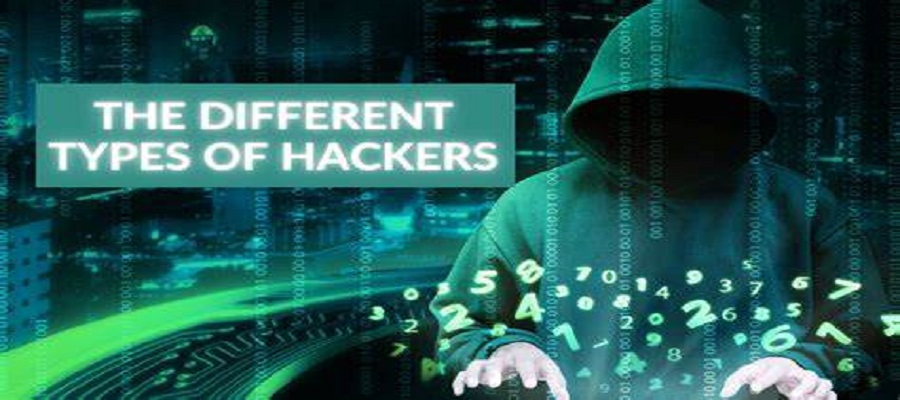E-Business
Qbot Emerges Most Prevalent Malware in First Half of 2023, Mobile Trojan SpinOk Makes its Debut

Check Point® Software Technologies, a provider of cybersecurity solutions globally, has published its Global Threat Index for June 2023. Researchers found that the Trojan Qbot has been the most prevalent malware so far in 2023, ranking first in five out of the six months to date.

Meanwhile, mobile Trojan SpinOk made its way to the top of the malware list for the first time after being detected last month, and ransomware hit headlines following a zero-day vulnerability in file sharing software MOVEIt.
Qbot, which initially emerged in 2008 as a banking Trojan, has undergone consistent development, acquiring additional functionalities for the purpose of stealing passwords, emails, and credit card details.
It is commonly propagated through spam emails and employs various techniques such as anti-VM, anti-debugging, and anti-sandbox methods to impede analysis and avoid detection.
Presently, its primary role is to act as a loader for other malware and establish a presence within targeted organizations, serving as a stepping stone for ransomware group operators.
Meanwhile, researchers discovered a prolific mobile malware that has so far amassed 421 million downloads. Last month, for the first time, Trojanized Software Development Kit (SDK) SpinOk made its way to the top of the mobile malware families. Used by numerous popular apps for marketing purposes, this malicious software has infiltrated highly popular apps and games, some of which were available on the Google Play Store.
Capable of stealing sensitive information from devices and monitoring clipboard activities, SpinOk malware poses a serious threat to user privacy and security, underscoring the need for proactive measures to protect personal data and mobile devices. It also serves as a stark reminder of the devastating potential of software supply chain attacks.
Last month also saw the launch of a large-scale ransomware campaign that impacted organizations worldwide. In May 2023, Progress Software Corporation disclosed a vulnerability in MOVEit Transfer and MOVEit Cloud (CVE-2023-34362) that could allow unauthorized access to the environment.
Despite it being patched within 48 hours, cybercriminals associated with Russian-affiliated ransomware group Clop exploited the vulnerability and launched a supply chain attack against MOVEit users.
To date, 108 organizations – including seven US universities – have been listed publicly, following the incident, with hundreds and thousands of records obtained.
“The MOVEit exploit proves that 2023 is already becoming a significant year in ransomware. Prominent groups like Clop are not operating tactically to infect a single target, but instead, making their operations more efficient by exploiting software that is widely used in a corporate environment.
This approach means they can reach hundreds of victims in a single attack.” said Maya Horowitz, VP Research at Check Point Software. “This attack pattern emphasizes the importance for companies to implement a multi-layered cyber security strategy and to prioritize patching quickly when vulnerabilities are disclosed.”
CPR also revealed that “Web Servers Malicious URL Directory Traversal” was the most exploited vulnerability last month, impacting 51% of organizations globally, followed by “Apache Log4j Remote Code Execution” with 46% of organizations worldwide. “HTTP Headers Remote Code Execution” was the third most used vulnerability, with a global impact of 44%.
Top malware families
Globally, Qbot was the most prevalent malware last month with an impact of 7% worldwide organizations, followed by Formbook with a global impact of 4% and Emotet with a global impact of 3%.
In Nigeria, Qbot was the most prevalent malware last month with an impact of 19.72%, followed by Expiro with an impact of 15.49% and FormBook with an impact of 7.04%.
- Qbot – Qbot AKA Qakbot is a multipurpose malware that first appeared in 2008. It was designed to steal a user’s credentials, record keystrokes, steal cookies from browsers, spy on banking activities, and deploy additional malware. Often distributed via spam email, Qbot employs several anti-VM, anti-debugging, and anti-sandbox techniques to hinder analysis and evade detection.
- Expiro – Expiro is a polymorphic file infector first seen in 2010. It inserts its malicious code into executable files on the infected host. These files lead to new infections when they are run on other machines. Expiro steals user and system information from Windows, as well as FTP credentials.
- FormBook – FormBook is an Infostealer targeting the Windows OS and was first detected in 2016. It is marketed as Malware as a Service (MaaS) in underground hacking forums for its strong evasion techniques and relatively low price. FormBook harvests credentials from various web browsers, collects screenshots, monitors and logs keystrokes, and can download and execute files according to orders from its C&C.
Top Attacked Industries Globally
Last month, Communications remained in first place as the most exploited industry globally, followed by Utilities and Transportation.
- Communication
- Utilities
- Transportation
Top exploited vulnerabilities
Last month, “Web Servers Malicious URL Directory Traversal” was the most exploited vulnerability, impacting 51% of organizations globally, followed by “Apache Log4j Remote Code Execution” with 46% of organizations worldwide. “HTTP Headers Remote Code Execution” was the third most used vulnerability, with a global impact of 44%.
- ↔ Web Servers Malicious URL Directory Traversal – There exists a directory traversal vulnerability on different web servers. The vulnerability is due to an input validation error in a web server that does not properly sanitize the URI for the directory traversal patterns. Successful exploitation allows unauthenticated remote attackers to disclose or access arbitrary files on the vulnerable server.
- ↔ Apache Log4j Remote Code Execution (CVE-2021-44228) – A remote code execution vulnerability exists in Apache Log4j. Successful exploitation of this vulnerability could allow a remote attacker to execute arbitrary code on the affected system.
- ↔ HTTP Headers Remote Code Execution (CVE-2020-10826, CVE-2020-10827, CVE-2020-10828, CVE-2020-13756) – HTTP headers let the client and the server pass additional information with an HTTP request. A remote attacker may use a vulnerable HTTP Header to run arbitrary code on the victim machine.
Top Mobile Malwares
Last month SpinOk rose to first place in the most prevalent Mobile malware, followed by Anubis and AhMyth.
- SpinOk – SpinOk is an Android software module that operates as spyware. It collects information about files stored on devices and is capable of transferring them to malicious threat actors. The malicious module was found present in more than 100 Android apps and downloaded more than 421,000,000 times until May 23.
- Anubis – Anubis is a banking Trojan malware designed for Android mobile phones. Since it was initially detected, it has gained additional functions including Remote Access Trojan (RAT) functionality, keylogger, audio recording capabilities and various ransomware features. It has been detected on hundreds of different applications available in the Google Store.
- AhMyth – AhMyth is a Remote Access Trojan (RAT) discovered in 2017. It is distributed through Android apps that can be found on app stores and various websites. When a user installs one of these infected apps, the malware can collect sensitive information from the device and perform actions such as keylogging, taking screenshots, sending SMS messages, and activating the camera, which usually used to steal sensitive information.
E-Business
Transcorp Hotels Delivers Stellar H1 Results, Declares Over ₦1Bn Dividend

Transcorp Hotels Plc has delivered a stellar performance in the first half of 2025, recording a 60% year-on-year surge in revenue to ₦47.57 billion, up from ₦29.72 billion in H1 2024. Gross profit climbed 71% to ₦36.21 billion, maintaining a strong 76% margin despite inflation and operational headwinds.

The hospitality giant, a subsidiary of Transnational Corporation Plc, also announced an interim dividend payout of ₦1.024 billion — offering ₦0.10 per 50 kobo ordinary share to shareholders.
In a bold move, the company unveiled Nigeria’s largest corporate venue — the 5,000-seat Transcorp Centre — staking its claim as the new leader in event hospitality. Chairman Emmanuel Nnorom described the results as proof of Transcorp Hotels’ transformative strategies and unwavering investor commitment. MD/CEO Uzo Oshogwe attributed the success to relentless execution and a resilient business model.
Transcorp Hotels, renowned for iconic assets like Transcorp Hilton Abuja and its digital platform Aura, says it isn’t just leading Nigeria’s hospitality sector — it’s redefining excellence across Africa.
E-Business
Microsoft Servers Hacked by Chinese Groups

Chinese “threat actors” have hacked Microsoft’s SharePoint document software servers and targeted the data of the businesses using it, the firm has said.

China state-backed Linen Typhoon and Violet Typhoon as well as China-based Storm-2603 were said to have “exploited vulnerabilities” in on-premises SharePoint servers, the kind used by firms, but not in its cloud-based service.
The US tech giant has released security updates in response and has advised all on-premises SharePoint server customers to install them.
“Investigations into other actors also using these exploits are still ongoing,” Microsoft said in a statement.
The firm said it had “high confidence” the hackers would continue to target systems which have not installed its security updates.
It added that it would update its website blog with more information as its investigation continues.
Microsoft said it had observed attacks in which hackers had sent a request to a SharePoint server “enabling the theft of the key material by threat actors”.
Charles Carmakal, chief technology officer at Mandiant Consulting firm, a division of Google Cloud, told reporter, it was “aware of several victims in several different sectors across a number of global geographies”.
Carmakal said it appeared that governments and businesses that use SharePoint on their sites were the primary target.
A number of adversaries who stole material encoded by cryptography were then able to regain ongoing access to the victims’ SharePoint data, he said.
“This was exploited in a very broad way, very opportunistically before a patch was made available. That’s why this is significant,” Carmakal said.
Carmakal said the “China-nexus actor” was deploying techniques similar to previous campaigns associated with Beijing.
Microsoft said Linen Typhoon had “focused on stealing intellectual property, primarily targeting organizations related to government, defence, strategic planning, and human rights” for 13 years.
It added that Violet Typhoon had been “dedicated to espionage”, primarily targeting former government and military staff, non-governmental organizations, think tanks, higher education, the media, the financial sector and the health sector in the US, Europe, and East Asia.
Meanwhile, Storm-2603 was “assessed with medium confidence to be a China-based threat actor”.
E-Business
NIMC Warns Nigerians of Fake NIN Website

National Identity Management Commission (NIMC) has issued a public warning that it is not associated with NINcard.com.

According to the commission, the website has been circulating online to offer services for Nigerians seeking National Identification Number (NIN) services.
NIMC, in a post on its official X account on Wednesday, said, “NINcard.com is not in anyway affiliated to NIMC. Stay vigilant!”
The warning was accompanied by screenshots of fake payment receipts and OTP request pages from the website, both of which were boldly stamped “FAKE” by NIMC to alert the public.

 Telecom2 days ago
Telecom2 days agoGlo Launches Nigeria’s First-of-its-kind Device Protection Plan

 Telecom2 days ago
Telecom2 days agoTelcos: How and Why Network Services have Been Poor

 Broadcasting2 days ago
Broadcasting2 days agoCanal+ Clears Final Hurdle to Acquire South Africa’s MultiChoice

 E-Business2 days ago
E-Business2 days agoNIMC Warns Nigerians of Fake NIN Website

 Telecom2 days ago
Telecom2 days agoMTN Executive Adeola Oduntan Emerges as Africa’s Supply Chain Leader of 2025

 Telecom2 days ago
Telecom2 days agoMTN Nigeria Sweeps Africa’s Procurement Awards With Innovation and Impact

 E-Business2 days ago
E-Business2 days agoMicrosoft Servers Hacked by Chinese Groups

 Telecom2 days ago
Telecom2 days agoTelegram to allow U.S. users send, receive crypto directly in app

























